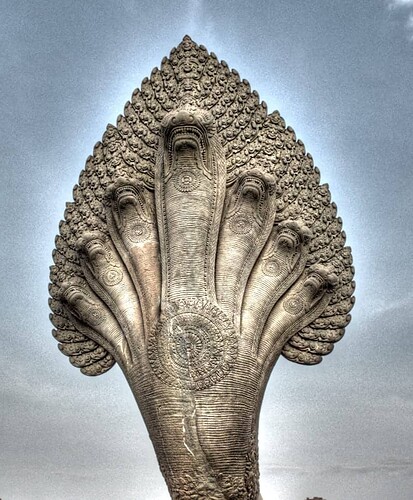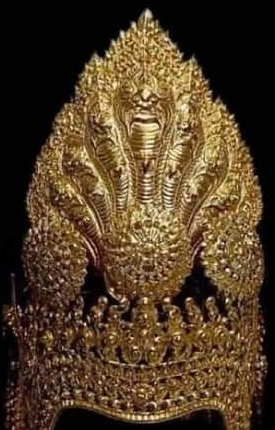The venerable Pennarin asked near a decade ago about the origins of the yuan-ti in Dark Sun. This subject has long needed some love:
Hopefully somebody, someday, somehow, will find the holy grail of an explanation, marrying logic, poetry, and a Dark Sun-ish twist to their culture, appearance, and demeanor.
See the old thread for the original responses. Here I proffer my own:
SUMMARY: They are the design of a great lizard man king from the time of the early Cleansing Wars. This great lizard man, endowed upon hatching with tremendous psionic talent and profound intellectual qualities, rose in time to become a 22nd level psionicist/druid character spirit of the land, and the great king of his scaly people. When slain and his body destroyed by Keltis and his army, and his spirit beholding the destruction of his people and the defiling of his vast swampy region, the nascent spirit of the land, defeated but not destroyed, settled to undermine the human kingdom that had taken the place of his own. As his wetland domains had not been totally defiled, though his body was destroyed, his spirit and powers slowly recovered. When his powers were suitably regathered, the spirit of the land then manifested at the royal palace and, with the bite of a serpent, poisoned the blood of the human king that had replaced him, a descendant of Keltis. The poison warped the king’s mind and body, and with his fanged bites he and his court spread the blood disease throughout the kingdom. Chaos and civil war followed. Keltis’ own templars fought against the lizard men abominations that now infested people throughout the kingdom, even among the royal family. The kingdom collapsed in short order, and although many of these abominations were killed, they were not extinguished, and still hide and terrorize humanity as they may.
Commentary: I think the very name “yuan-ti” is not helpful to realign our thoughts about the Dark Sun version of these creatures, though I would follow very closely their stats and much else about them from the Monstrous Manual. I give to the original lizard man spirit of the land king the name of Nabathth. His guarded lands long since utterly destroyed by defiler wars and cataclysm, and now an enormous salt flat, the echo of his spirit exists now only in his creations, in the very blood of the Sons of Nabathth. They know next to nothing of their ancient history, but the spirit of Nabathth whispers within their minds images and dreams for them to follow.
The Prophesied Return of Nabathth: Aside from vengeance upon humanity, which can serve to expand their numbers by infecting other humans, or to create monstrous servitors from humans, their poisoned blood urges the best and most suitable of them to become druids of swampy lands (if any such lands can be found upon Athas!). If one of them becomes great enough (14th level, capable of casting the reincarnation and a quest version of the resurrection spell), and a suitable ritual is completed (likely involving the sacrifice of 22 willing newly inflect pure-bloods), perhaps Nabathth will be reborn upon the swamp, hatching with a reborn body from the mire, and thus their long-promised-to-return-king would be among them again, and restore their ancient kingdom, and complete their vengeance upon the human world.
Perhaps one day I will expand upon this, as I see the backstory of Nabathth and the Sons of Nabathth playing an important role in several ancient events.


